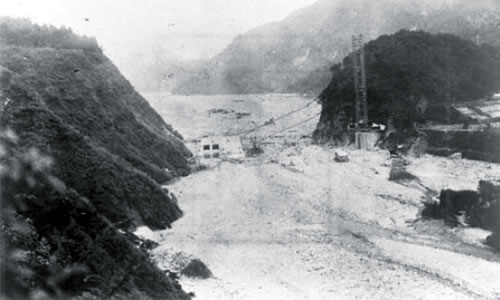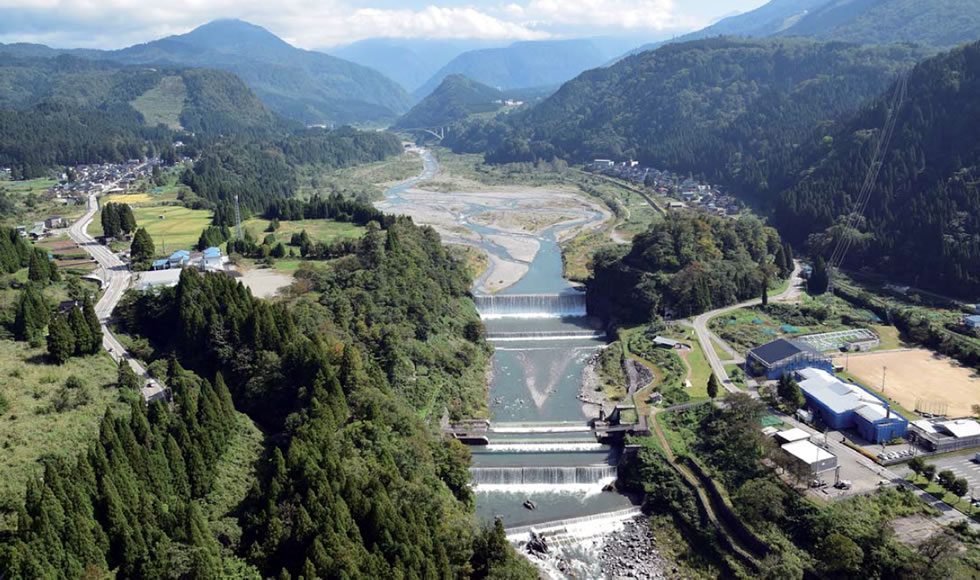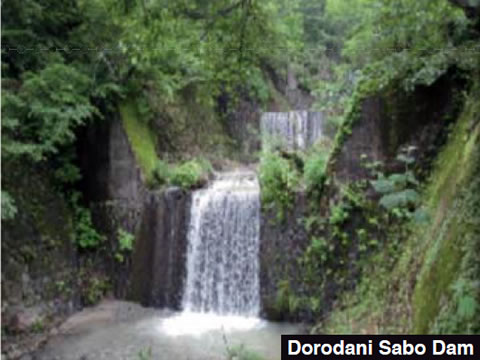Hongu Sabo Dam -One of the Largest Sediment Trap Capacity in Japan-

Hongu Sabo Dam under construction
In order to control the flooding repeated in the Toyama Plain, It was an urgent issue to make a large-scale sabo facility capable of controlling huge amount of sediment discharge in the middle of the Joganji River.
This main sabo dam was completed in 1937 in an extremely short construction period of only 2 years.
The volume of the designed sediment storage is about 5,000,000 m3, one of the largest capacities in Japan.

One of the largest sediment trap capacity in Japan (about 5 million m3)

Dorodani Series of Sabo Dams that prevents erosion of streams and hillsides and contributes rejuvenation of vegetations
In addition to Shiraiwa Sabo Dam, which had been designated as Important Cultural Property in September 2009, Hongu Sabo Dam and Dorodani Series of Sabo Dams were collectively called “Joganji River Sabo Facilities” and designated as an Important Cultural Property in November 2017.
